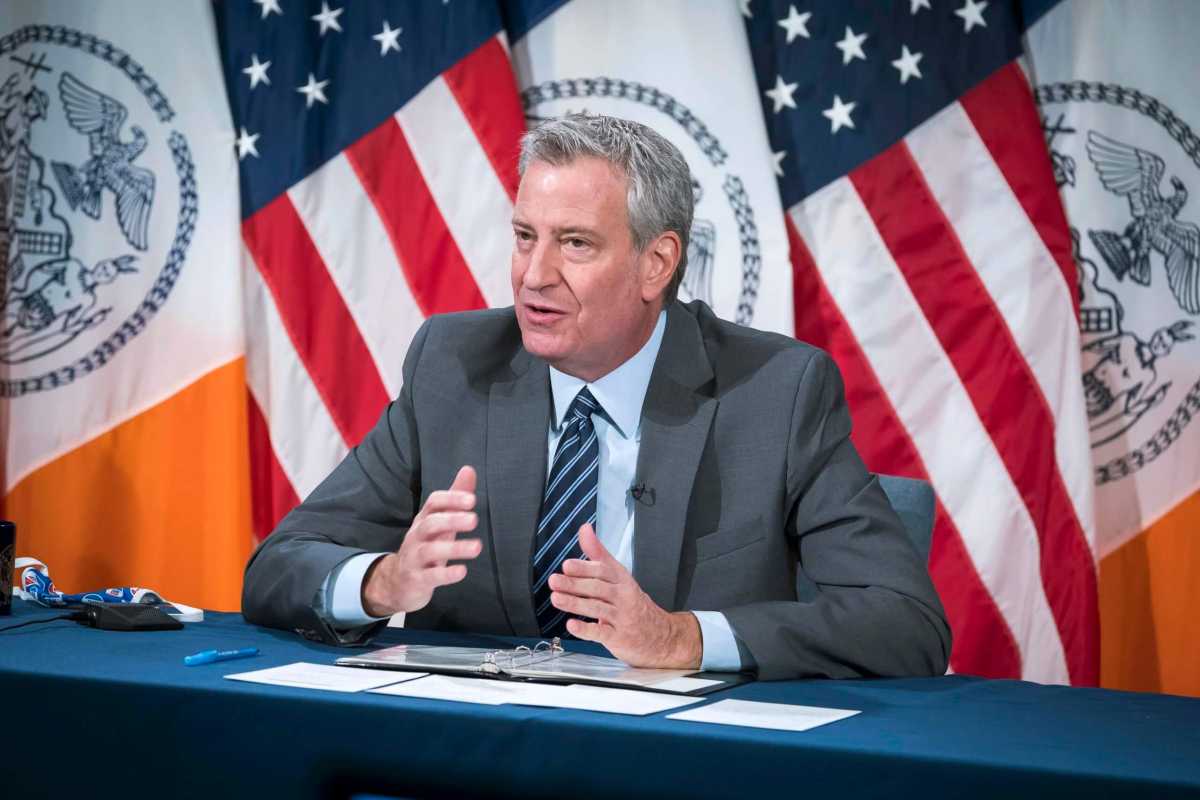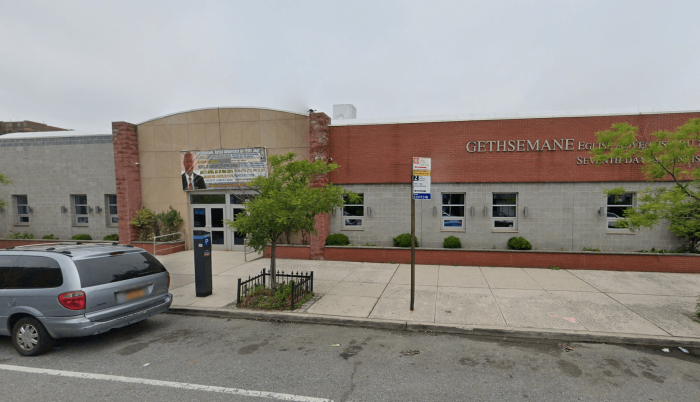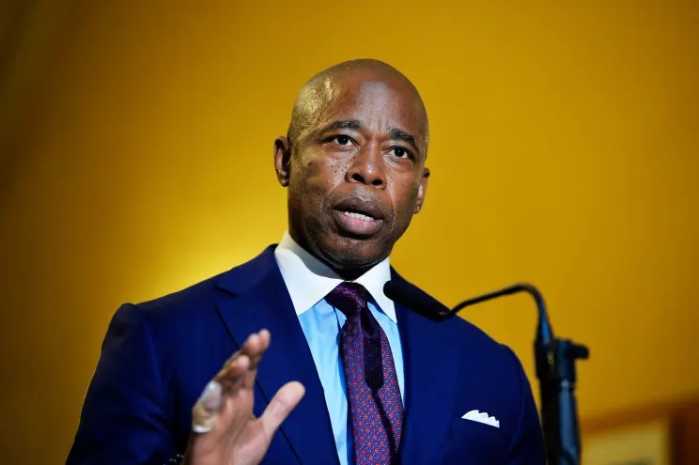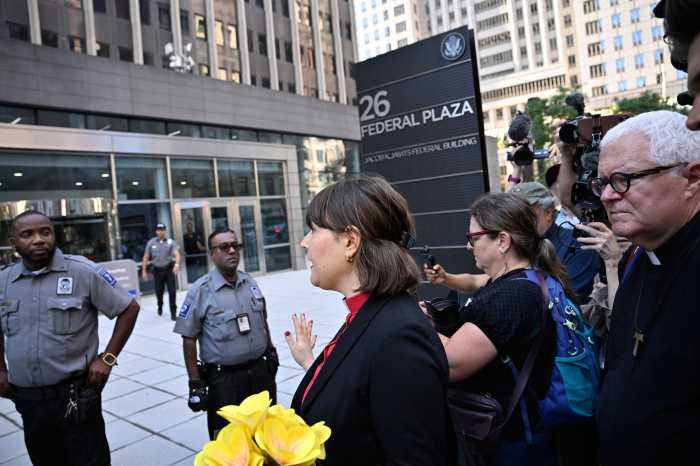With 1,200 new estimated HIV infections in New York City in 2019, the city will likely miss a key goal of the Plan to End AIDS that called on the city to reduce new estimated HIV infections to 660 in 2020 — which would have required a 45 percent drop between 2019 and 2020.
The plan, which Mayor Bill de Blasio and Governor Andrew Cuomo endorsed in 2014, expands HIV testing and treats HIV-positive people with anti-HIV drugs so they remain healthy and the virus is undetectable in their bodies so they cannot infect others. The plan also relies on giving HIV-positive people housing, nutrition, transportation, and other services to make it easier for them to keep taking their drugs.
Truvada, an anti-HIV drug, is given to HIV-negative people to keep them uninfected. That drug regimen, which is called pre-exposure prophylaxis (PrEP), is highly effective when used correctly. A cocktail of anti-HIV drugs can be given to HIV-negative people with a recent exposure to the virus so they remain uninfected. That second drug regimen is called post-exposure prophylaxis (PEP). It is also highly effective when taken correctly.
An original goal of the plan was to reduce new estimated HIV infections from 2,000 in 2015 to 600 in 2020. There were 1,200 estimated new HIV infections in the city in 2019, according to a city health department report that was released in December. While that number has declined since 2015 by about 200 new infections per year year-over-year, the declines have never been close to a 45 percent change year-over-year. The largest decline was a 14.2 percent change from 1,400 estimated new infections in 2018 to 1,200 new infections in 2019.
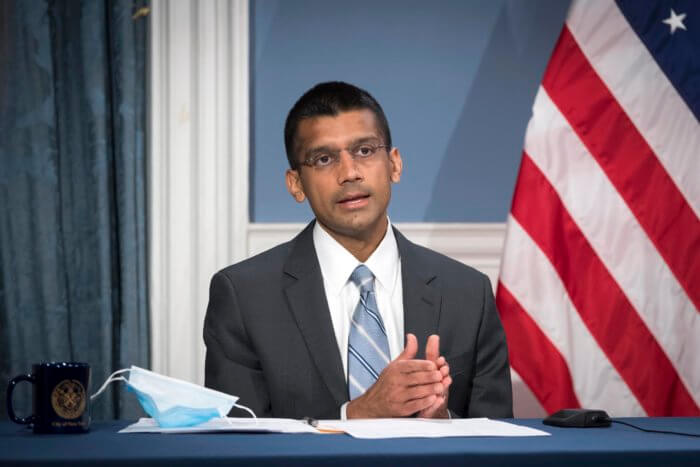
The plan was conceived by Charles King, the chief executive at Housing Works, a non-profit serving people living with HIV/AIDS and experiencing homelessness, and Mark Harrington, the head of Treatment Action Group, an advocacy organization. It was King who convinced the state health department and the city to embrace the very ambitious goal of a substantial reduction in estimated new HIV infections.
The state health department originally had a goal of getting to 750 estimated new HIV infections statewide in 2020. With most new HIV infections occurring in New York City, the city adopted 600 new infections for its original 2020 goal. In 2019, the state conceded that that goal was unrealistic and it now has a goal of 825 new HIV infections in 2020. A state health department website that tracks metrics for the Plan to End AIDS has 660 new estimated HIV infections as the city’s new goal.
Gay City News found the new 660 metric only after questioning city officials about the goal.
The plan has been successful in getting more newly diagnosed people into treatment and undetectable. New HIV infections were already declining in the city and the plan used the classic public health strategy of jumping on an existing downward trend with additional resources to accelerate a decline.
New HIV infections among injecting drug users have nearly been eliminated by distributing clean needles to injectors. Thirty-six new HIV diagnoses were attributable to needle sharing in 2019, with another 24 attributable to needle sharing and sex among men who have sex with men. Early in the epidemic, needle sharing resulted in thousands of new HIV diagnoses in a year. One new HIV diagnosis was attributable to mother-to-child transmission in 2019. That transmission mode used to result in hundreds of new HIV diagnoses per year.
New HIV infections among gay and bisexual men in the city have declined substantially among white gay and bisexual men, but remain stubbornly higher among Black and Latinx men who have sex with men. In 2017, that disparity was large enough to prompt Dr. Demetre Daskalakis, then the city health department’s deputy commissioner for disease control, to say “You lost the game” when asked about the plan’s goal if new HIV infections were not reduced among Black and Latinx gay and bisexual men. Daskalakis is now the director of the Division of HIV/AIDS Prevention at the federal Centers for Disease Control and Prevention.
During the mayor’s press availability on January 6, the mayor and city health officials appeared to be unaware that the state health department had assigned the new metric. They remained upbeat about further reductions in new estimated HIV infections despite the COVID-19 outbreak that continues to plague New York City and much of the world.
“It has made a world of difference,” de Blasio said during the press availability. “2020 was obviously a year where many goals and plans have been disrupted by the coronavirus… Our focus on ending the epidemic is a strong as ever. It’s quite clear that when we work closely with communities, when we provide the right kind of resources… that’s the way forward.”
Dr. David Chokshi, the city’s health commissioner, praised the mayor for his “visionary plan for ending the epidemic” and added that it was too soon to know what the 2020 numbers will be.
“There have been historic reductions in new HIV infections year over year,” Chokshi said. “Between 2019 and 2020, the preliminary data that we have does indicate that those reductions will continue between 2019 and 2020… We’ll see what the final numbers show with respect to new infections in 2020.”
While achieving a 45 percent reduction in new estimated HIV infections in 2020 over 2019 remains unrealistic, it is a gruesome fact that New York City’s COVID-19 outbreak may have reduced sexual interactions among men who have sex with men who fear the coronavirus. That could mean a larger reduction in new HIV infections than might otherwise have occurred. One way to measure that is to look at changes in the incidence of sexually transmitted infections, such as syphilis and gonorrhea, among gay and bisexual men.
“There have been some declines, but the picture is more complicated because in many cases care was interrupted in March and April so people weren’t getting tested as often for those infections,” Chokshi said.
To sign up for the Gay City News email newsletter, visit gaycitynews.com/newsletter.

